Our understanding of dark matter and its behavior could be missing a key ingredient. More gravitational lensing, the curving of spacetime and light by massive objects, could lead to the perfect recipe to solve this cosmic mystery.
Despite comprising anywhere between 70–90% of the Universe’s total mass and the fact that its gravitational influence literally prevents galaxies like the Milky Way from flying apart, science is still in the dark about dark matter.
As researchers around the globe investigate the nature and composition of this elusive substance, a study published in the journal Science suggests that theories of dark matter could be missing a crucial ingredient, the lack of which has hampered our understanding of the matter that literally holds the galaxies together.
The presence of something missing from our theories of dark matter and its behavior emerged from comparisons of observations of the dark matter concentrations in a sample of massive galaxy clusters and theoretical computer simulations of how dark matter should be distributed in such clusters.
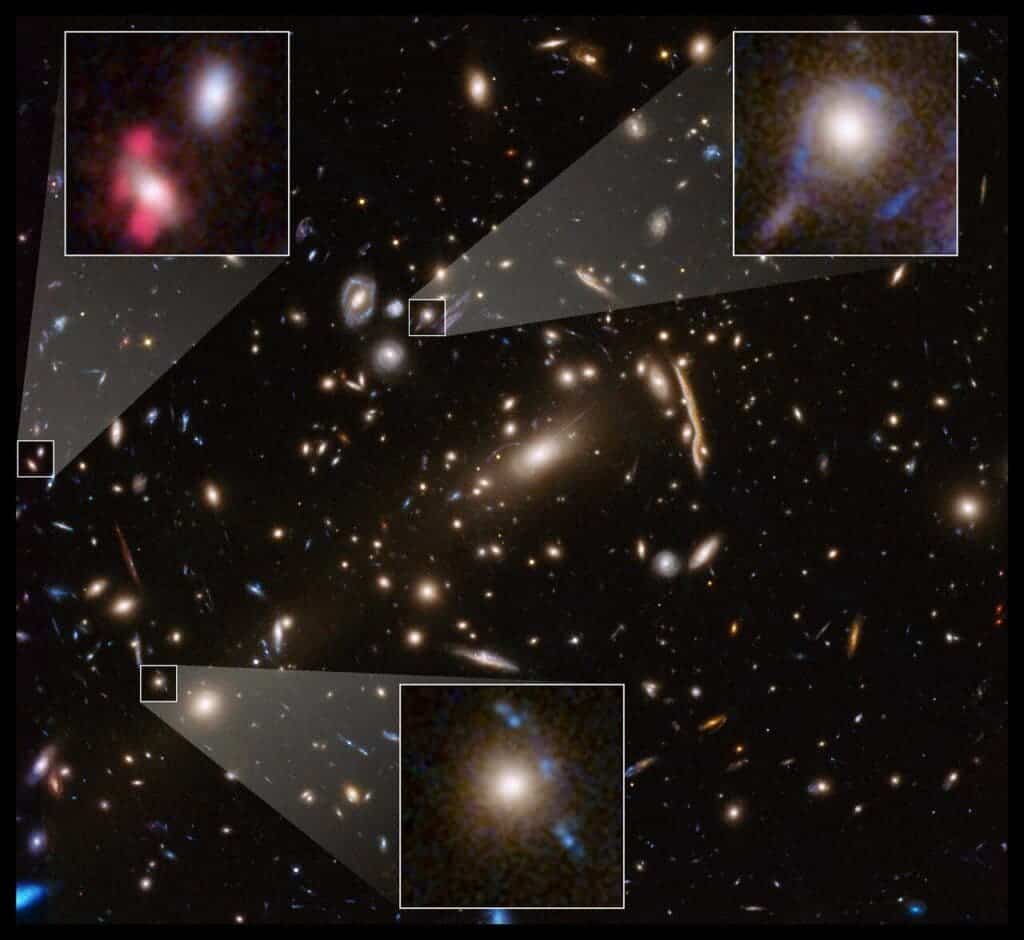
Using observations made by the Hubble Space Telescope and the Very Large Telescope (VLT) array in the Atacama Desert of northern Chile, a team of astronomers led by Massimo Meneghetti of the INAF-Observatory of Astrophysics and Space Science of Bologna in Italy have found that small-scale clusters of dark matter seem to cause lensing effects that are 10 times greater than previously believed.
“Galaxy clusters are ideal laboratories in which to study whether the numerical simulations of the Universe that are currently available reproduce well what we can infer from gravitational lensing,” says Meneghetti. “We have done a lot of testing of the data in this study, and we are sure that this mismatch indicates that some physical ingredient is missing either from the simulations or from our understanding of the nature of dark matter.”
Just Add Gravitational Lensing
The lensing that the team believes accounts for dark matter discrepancies is a factor of Einstein’s theory of general relativity which suggests that gravity is actually an effect that mass has on spacetime. The most common analogy given for this effect is the distortion created on a stretched rubber sheet when a bowling ball is placed on it.
This effect in space that results from a star or even a galaxy curving space and thus bending the path of light as it passes the object. Otherwise known as gravitational lensing it is commonly seen when a background object–which could be as small as a star or as large as a galaxy– moves in front of a foreground object and curves light from it giving it an apparent location in the sky.
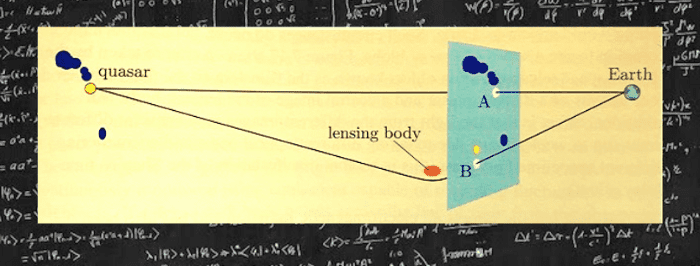
In extreme cases, where this lensing causes the paths of light to change in such a way that its arrival time at an observer is different, it can cause a background object to appear in the night sky at various different points. A beautiful example of this is an Einstein ring, where a single object appears multiple times forming a ring-like arrangement.
Because dark matter only interacts via gravity, ignoring even electromagnetic interactions — hence why it can’t be seen — gravitational lensing is currently the best way to infer its presence and map the location of dark matter clusters in galaxies.
Returning to the ‘rubber sheet’ analogy from above, as you can imagine, a cannonball will make a more extreme ‘dent’ in the sheet than a bowling ball, which in turn makes a bigger dent than a golf ball. Likewise, the larger the cluster of dark matter — the greater the mass — the more extreme the curvature of space and therefore, light.
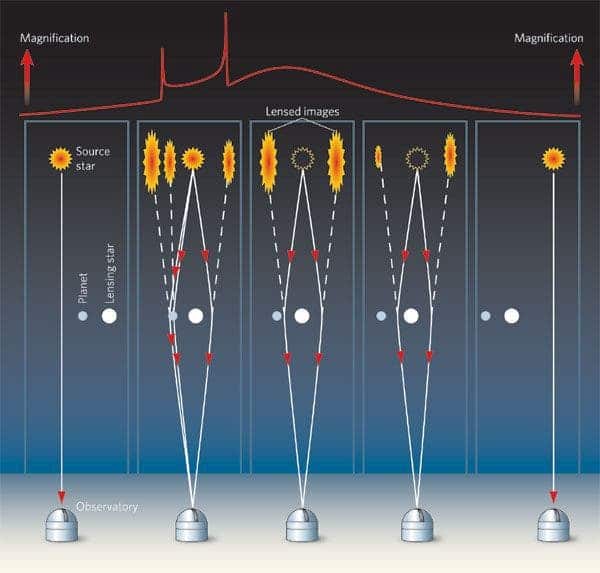
But now imagine what would happen if the bowling ball on the rubber sheet was surrounded by marbles. Though their individual distortions may be small, their cumulative effect could be considerable. The team believes this may be what is happening with smaller clusters of dark matter. These small scale clumps of dark matter enhance the overall distortion. In a way, this can be seen as a large lens with smaller lenses embedded within it.
Cooking Up A High-Fidelity Dark Matter Map
The team of astronomers was able to produce a high-fidelity dark matter map by using images taken by Hubble’s Wide Field Camera 3 and Advanced Camera Survey combined spectra data collected by The European Southern Observatory’s (ESO) VLT. Using this map, and focusing on three key clusters — MACS J1206.2–0847, MACS J0416.1–2403, and Abell S1063 — the researchers tracked the lensing distortions and from there traced out the amount of dark matter and how it is distributed.
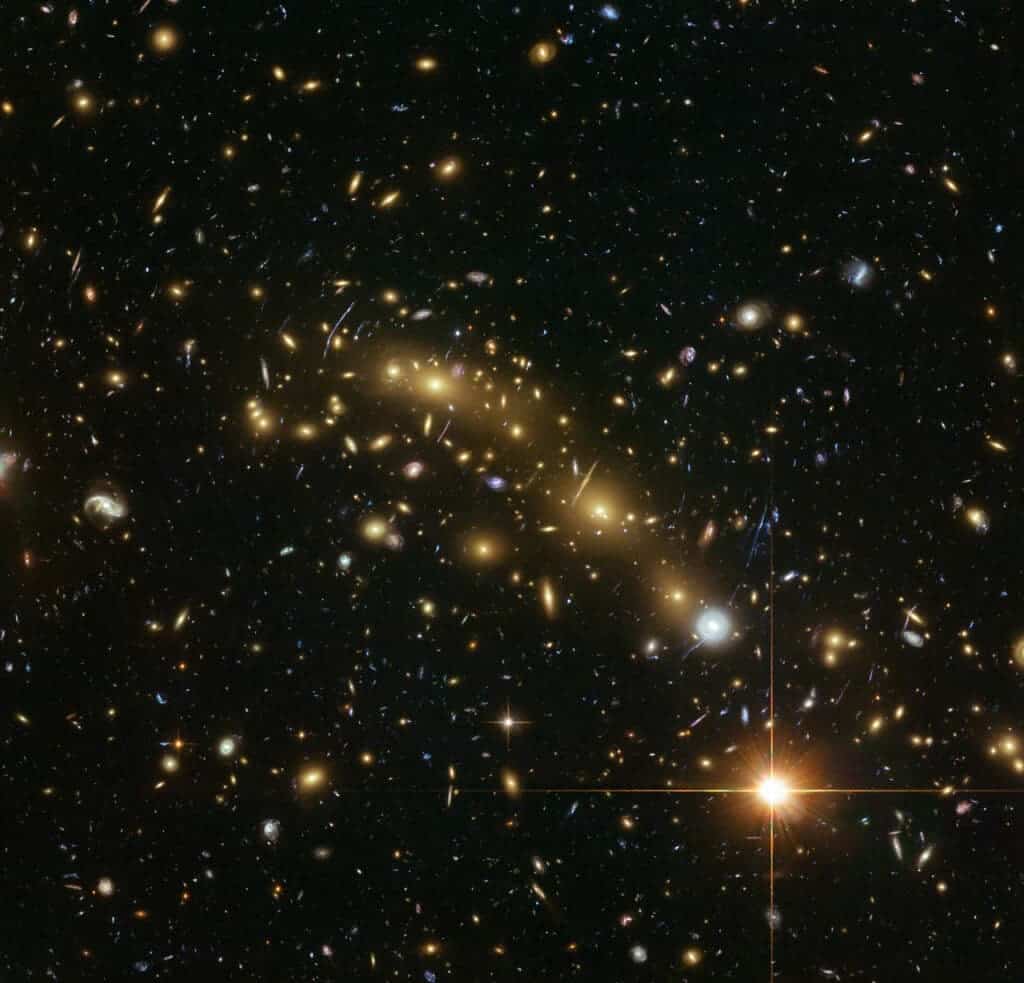
“The data from Hubble and the VLT provided excellent synergy,” says team member Piero Rosati, Università Degli Studi di Ferrara in Italy. “We were able to associate the galaxies with each cluster and estimate their distances.”
This led the team to the revelation that in addition to the dramatic arcs and elongated features of distant galaxies produced by each cluster’s gravitational lensing, the Hubble images also show something altogether unexpected–a number of smaller-scale arcs and distorted images nested near each cluster’s core, where the most massive galaxies reside.
The team thinks that these nested lenses are created by dense concentrations of matter at the center of individual cluster galaxies. They used follow-up spectroscopic observations to measure the velocity of the stars within these clusters and through a calculation method known as viral theorem, confirmed the masses of these clusters, and in turn, the amount of dark matter they contain.
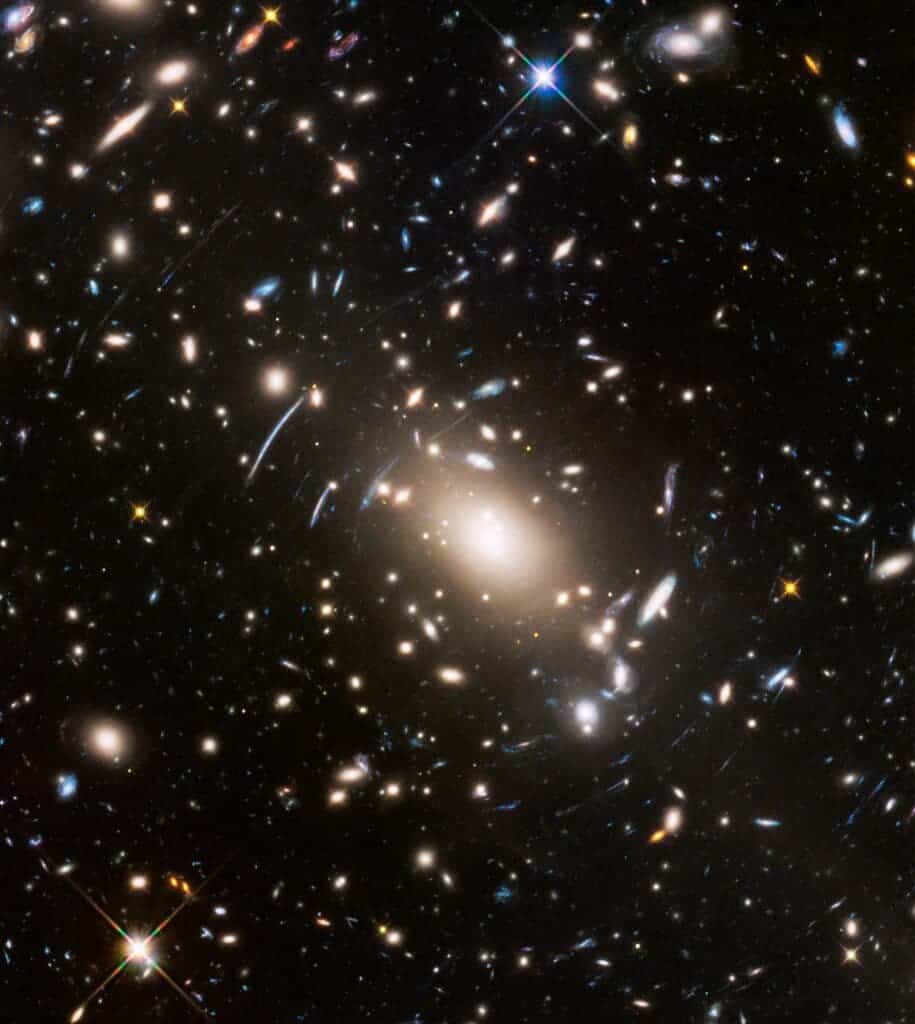
This fusion of observations from these different sources allowed the team to identify dozens of background lensed galaxies that were imaged multiple times. The researchers then took this high-fidelity dark matter map and compared it to samples of simulated galaxy clusters with similar masses, located at roughly the same distances.
These simulated galaxy clusters did not show the same dark matter cluster concentrations — at least not on a small scale that is associated with individual cluster galaxies.
The discovery of this disparity should help astronomers design better computer simulation models and thus develop a better understanding of how dark matter clusters. This improved understanding may ultimately lead to the discovery of what this abundant and dominant form of matter actually is.
Original research: Meheghetti. M., Davoli. G., Bergamini. P., et al, ‘An excess of small-scale gravitational lenses observed in galaxy clusters,’ Science, [2020],
Was this helpful?



